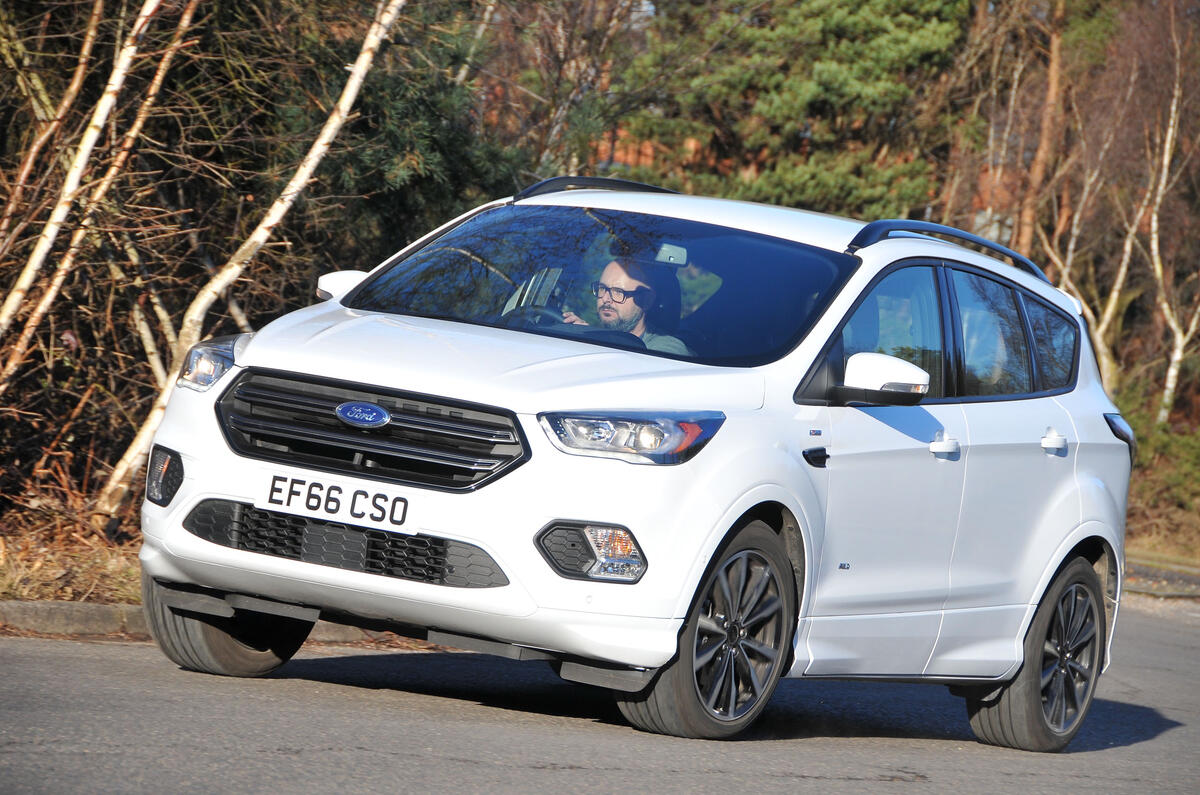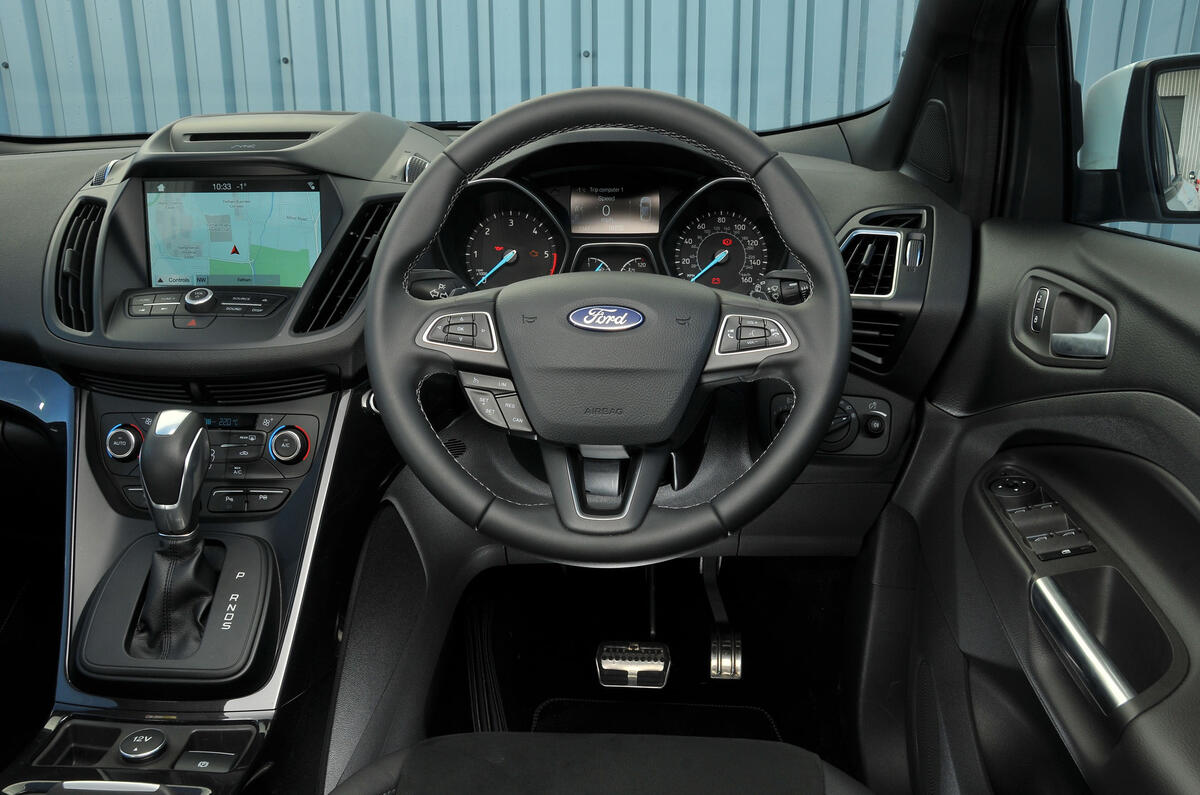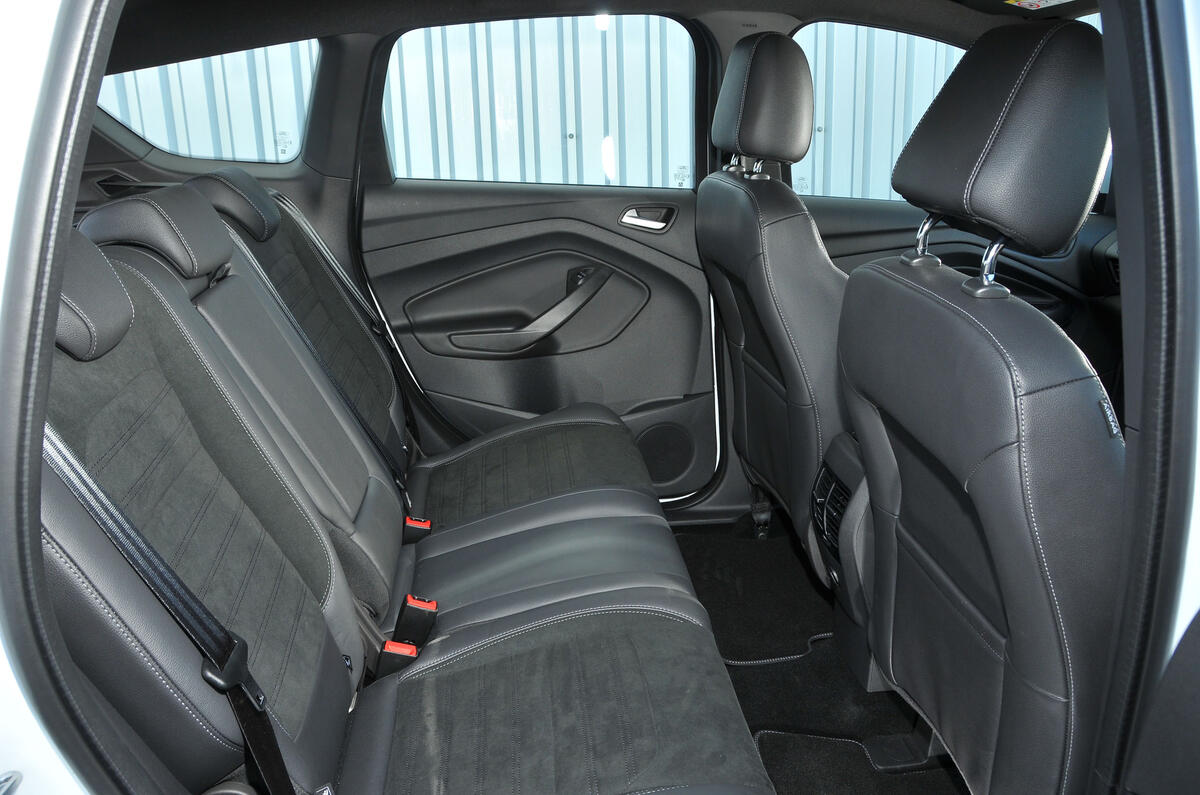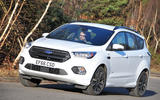The Ford Kuga’s wheelbase survives unaltered. Better packaging must explain the cabin space that Ford has found, because the car is also slightly lower and narrower than it was. The driving position is quite recumbent for an SUV, while the fascia swells to eat into front-row knee space slightly, in the current Ford design idiom.
Rear passenger space is decent; it’s still a way off the most practical cars in the class, but generous enough even for large adults. A Honda CR-V or a Kia Sorento would beat the Ford on second-row legroom, but only just, while the CR-V is bested by the Ford on rear headroom.
Boot space, too, is significantly improved. It’s not outstanding, but a minimum 800mm of load length with the second row in place, and 1080mm of usable width, is close enough to the 4x4 norm.
On quality and appearance, the Kuga’s cabin meets Ford’s usual high standards. The fascia is designed in the now-familiar Ford style and is made out of a mix of grained plastics, inlay trims in dark grey and matt chrome detailing.
It is much the same dashboard as you’ll find in the Focus and C-Max, and there are no special 4x4 touches such as pillar-mounted handles or Neoprene seat covers. The ambience is simpler than that – one of a modern, normal, substantial, quality car for everyday family use.
Ford's quite generous with the Kuga's kit levels as well, with buyers having six trims to choose from, not to mention the numerous options to peruse and select. Entry-level Zetec models get 17in alloys, a twin exhaust system, DAB radio, manual air conditioning, USB and Bluetooth connectivity, electric windows, keyless start, cruise control and Ford's Quickclear windscreen as standard.




































